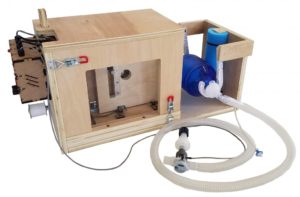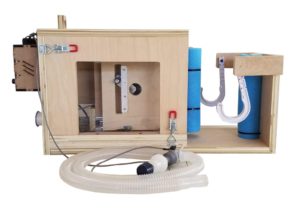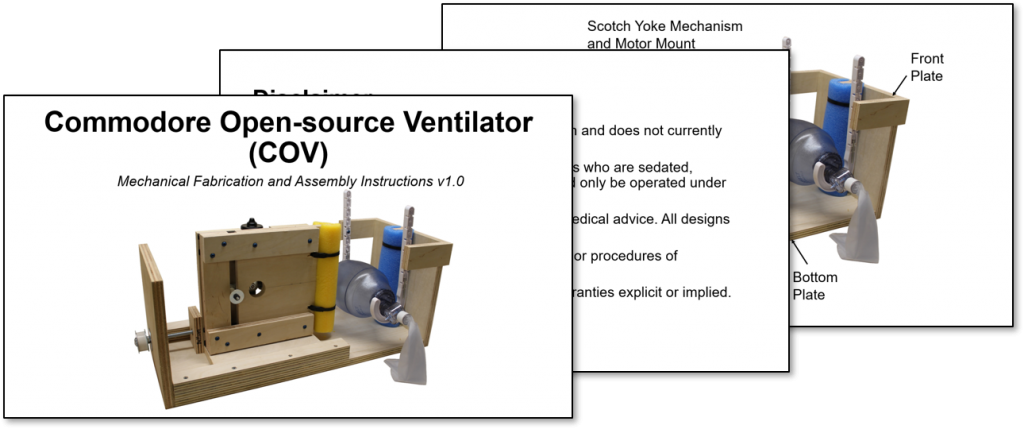Mechanical
This device works using a Scotch Yoke mechanism attached to a windshield wiper motor. Ideally all materials can be found at your local hardware store and can be assembled without specialty equipment (although a laser cutter can be used if available). Tidal volume is set by adjusting the lead screw. It is extremely important that the user can immediately grab the bag from the setup and convert to manual compression if necessary.
A Note on Windshield Wiper Motors: Some have questioned whether windshield wiper motors will work in this application, and whether they are a good choice. We argue that they are, based on their wide availability and excellent torque and speed characteristics, for this application. It has been argued that they must be backdrivable for safety. Ours actually are (you can backdrive them by hand – it requires a little effort, but is possible), but our latest design does not actually require backdrivability; it addresses release of the Ambu bag in an emergency scenario via a quick release on the lead screw that adjusts the tidal volume (mechanical details on this quick release coming soon). It has also been argued that high resolution optical motor encoding is needed. In our system we simply rely on limit switches to know when the system hits specific points in the breathing cycle. This works well, in practice. Is a high-end, encoded DC motor nice to have? Sure, but from both a cost and wide accessibility in an emergency scenario perspective, you can’t beat a good old windshield wiper motor, in our opinion.
Windshield wiper motors are designed for repeated, reliable operation under variable loading conditions. This is the core of our argument for their use in our design: the high torque output makes them good at rejecting disturbances, making open-loop control a reliable option. But why take our word for it, when the results speak for themselves? With the biggest criticism being lack of position feedback for stable BPM/IE, observe the experimental plots below which were taken from our 4-hour live swine study. Using open-loop control and inspiratory/expiratory triggering from the limit switches, the BPM was held to 21.6 +/- 0.21, and the I/E was held to 1:2 +/- 0.04, for a PEEP setting of 12 cm H2O. This level of deviation is well and beyond clinical acceptability.

Materials:
- Windshield Wiper Motor (we use a Nissan Altima motor)
- Plywood
- Wood Screws
- Pool Noodle (or cushioning equivalent)
- Drawer glides
- Scotch Yoke Mechanism
- Zip Ties
- PVC Pipe Holders
- Various Fasteners, Wood-screws, Bolts, and Nuts
Version 4.0 of the Commodore Open-Source Ventilator is shown below.







We have created a slide deck with detailed manufacturing and assembly instructions. Minimal woodworking experience is required. Click the image below to download the slides in the form of a .pdf file.
